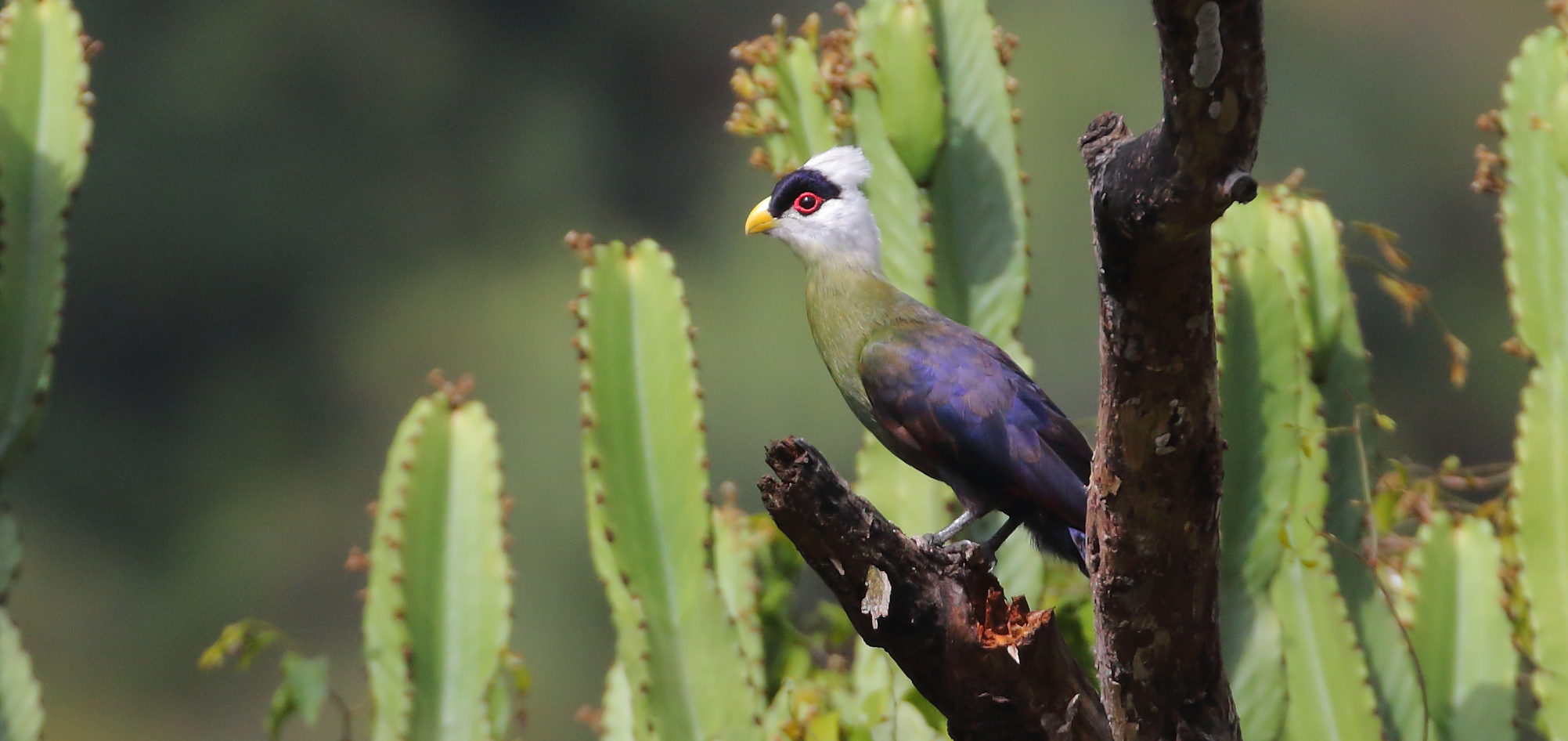
White-crested Turaco by Keith Valentine
Perhaps now more than ever before, we (all of us) are so thankful for nature and birds. Many of us gave our backyards, gardens, and neighborhoods more scrutiny than ever before. And some of us enjoyed remarkable sightings and discoveries right at or near our homes. Certainly, there is a lot to look forward to in 2021 and 2022 and beyond. One thing that 2020 may have delivered us is a bit of perspective, and no one could ever take travel for granted ever again. And, enjoying nature at home gives you real perspective on the nature and birds you see abroad. Of course, the reverse is true as well, and we look forward to enjoying that perspective in a fresh way in the very near future.
PAUL VARNEY
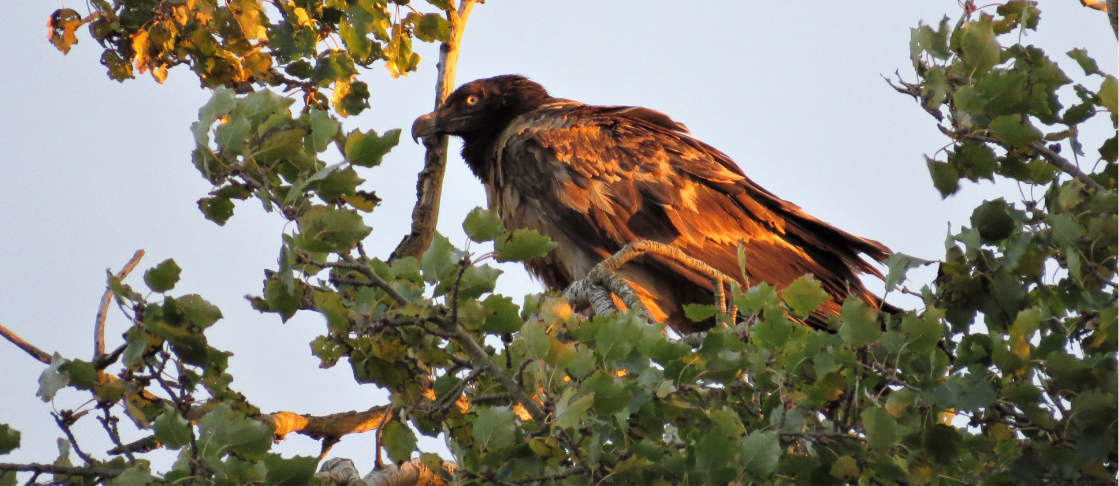
This Bearded Vulture made headlines in 2020 when it visited the UK, just the 2nd one known from there. A few weeks later, it was relocated in the Peak District, an area of moorland with some crags where the bird was found to be roosting.
Bearded Vulture, an impressive beast of a bird is not officially on the UK list as the one previous record was regarded as “human-assisted”, virtue of the fact that there is a re-introduction programme in the Alps in southern Europe. Some of these birds were known to wander and had been seen in northern Europe in previous years. It was likely that the UK bird(s) were also from this programme.
To see this one for me would have meant a 3 hour drive each way, a 2 hour walk in the dark across the moors to the roosting cliff to be on site for dawn when it woke and departed. I decided, Naahh. Then the photos started to appear! And I cracked. So, it was on July 14th I found myself waiting, having done the drive and the night walk at the craggy cliff. As the light improved, there it was, a huge Bearded Vulture – an immature sat right in front of us (albeit at a fair distance). I had made the right decision – it was so worth coming. Then it took flight, and that decision became even more worthwhile. It glided and soared and flapped in the valley, right in front of us and the sheer enormity of the bird – that it was here in the UK but also the size – they are immense – this was a magical moment. After 20 minutes or so it glided off over the moorland, disappearing out of sight.
It remained in the area for several weeks and then departed being seen over Oxford in southern England in mid-September. It was heading home.
On 28th September, I checked the bird news on my phone at home. Whaaaat…Lammergeier in my home county – 15 minutes away. I was out of the door in moments. As I arrived at the village it had been reported from, I saw it gliding over fields to my left. Stopping abruptly, I was out of the car and watching it again but this time locally. This time I only saw it in flight and for 20 minutes or so before it gained height and disappeared but wow.
On October 10th I saw it again in Cambridgeshire this time unbelievably close and both perched in trees on the ground and in flight. At one stage I watched it come down on the road in front of a birders car to pick at some roadkill – the birder was trying to park but was blocked by a Lammergeier on the road – doesn’t happen every day.
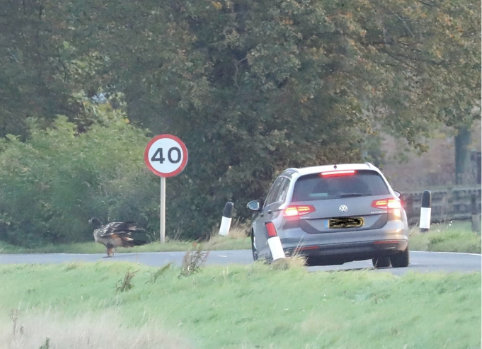
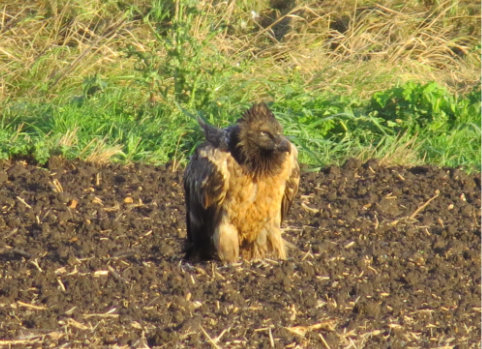
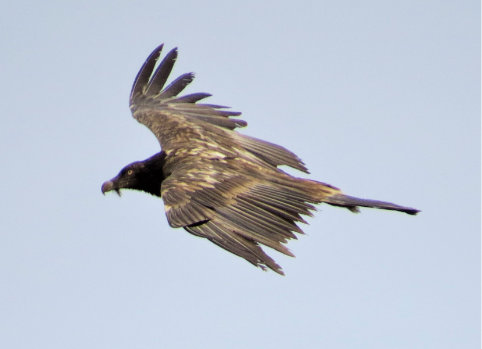
STEPHAN LORENZ
Essentially, for all of us, our plans for 2020 changed dramatically, and, for example, instead of heading on tour for the spring, I found myself traveling throughout western Wyoming doing surveys. Wyoming is one of the least populated states in the US, with empty stretches of sagebrush steppe and endless rugged mountains. While camping throughout the region, I had the opportunity to truly enjoy the landscapes and wildlife. One of the signature sounds of the sagebrush steppe that I will always remember is the melodic and pensive song of the Sagebrush Sparrow. These distinctive birds would sit up on frosty mornings and sing energetically with their notes drifting throughout the aromatic air of the sagebrush. The Sagebrush Sparrow spends the majority of its time on or near the ground and is an adept runner, often scurrying along on fast legs with its tail raised like a miniature thrasher or is even reminiscent of Australia’s grasswrens. It is migratory and leaves the northern parts of its range during the winter months, but on those cold, early spring mornings it can be abundant in the right habitat. I missed many tours in 2020, some were new, and others were perennial favorites, but I will fondly remember the stunning landscapes of western Wyoming and waking up to the sparrows singing just outside the tent.
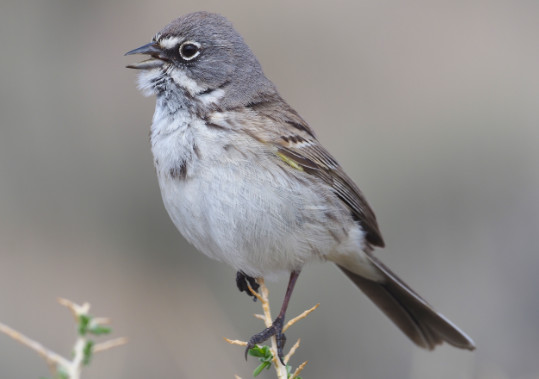
GLEN VALENTINE
2020…Wow, what an interesting year it’s been. With hardly any overseas travel to be had over the course of the year, I’ve spent a great deal of the year birding my “home province/state” of KwaZulu-Natal in Eastern South Africa. A bird-rich area indeed, I’ve been fortunate to have had the chance to really get to know our local birds and their calls, habits, habitats and the best sites to see many of our most special species. Local highlights have been numerous and have included avian gems like Rosy-throated Longclaw, Southern Tchagra, Narina Trogon, Red-chested and Buff-spotted Flufftails, Knysna Warbler, Wattled Crane, Woodward’s Batis, Green Twinspot and many more. However, as good as the local birding’s been, especially during the past few months in spring and early summer, pride of place for my top bird of 2020 has to go to one of the very special Vietnamese endemics that we encountered during my last Rockjumper tour in February earlier in the year.
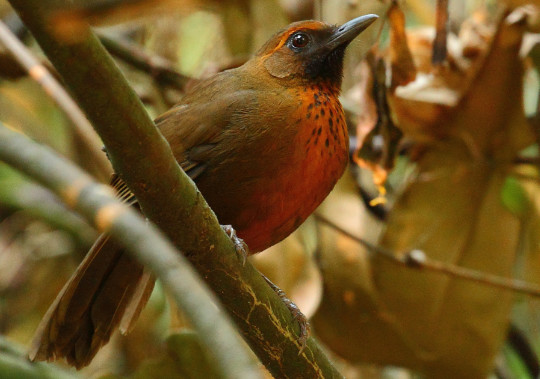
The Orange-breasted Laughingthrush is, like many laughingthrushes, an absolute stunner with a beautiful song. This particular species occupies a tiny range and is endemic to the highlands of southern Vietnam where it skulks about in pairs in the dark, dense understory of broad-leaved, montane evergreen forest. However, due to its beauty, both in appearance and song, it is sadly highly sought for the ongoing cage bird trade that is tragically prolific throughout South-East Asia. Numbers are dwindling and the species is now extremely rare, localised and endangered. However, during our February 2020 comprehensive tour of Vietnam, we were fortunate to have enjoyed unbeatable views of this speciality in the Di Linh area. Considering its rarity and the amazing and prolonged views we were treated to of this usually extremely shy and skulking species, there’s no wonder it was rated as one of the top birds of the tour and also earned poll position on my list of top birds seen in 2020.
Here’s hoping we can soon break the backbone of Covid-19 and that 2021 will see us all traveling once again and enjoying the glorious birds and mouth-watering destinations across the globe!
LEV FRID
I feel very lucky to have had a couple of great tours before the pandemic halted all travel for the foreseeable future and I, like many other tour leaders, was stuck back home. To make matters worse, I had to move out of my apartment in the wilds of central Ontario to the outskirts of Toronto. House Sparrows and feral pigeons replaced Evening Grosbeaks and Bohemian Waxwings as backyard birds, and I only had a tiny window in my basement abode from which to view. A drastic change that inspired a road-trip, once it was safe to do so, to the west coast of Canada, a journey I had never done before.
It ended up being an incredible birding and mammal-watching trip that I would never have been able to do if not for the lockdown, so it was a something to be thankful for. Once back, I settled in for my new city life. The basement birding proved better than expected, with a variety of migrants that I never expected in a tiny space sandwiched between two townhomes. I found a few small local parks that had good stopover habitat and went on to record a huge diversity of migrants, including several rare species for the region. The autumn migration was solid from August through until November, when several irruptive northern species ventured south. My worries that I would be trapped in a birdless wasteland could not have been further from the truth – another thing to be thankful for.
It ended up being a year with several surprise highlights. However, I think that my favourite moment of 2020 had to have been during the Manitoba: Northern Owls trip that George Armistead and I led in March, very close to the start of the lockdown. As a relatively recent addition to the Rockjumper crew, I was very keen to show off Canada. This was the inaugural tour, which made it a very special one indeed. George and I had great luck scouting the day prior, but I was still anxious about the star of the tour when one of the guests spotted one on our drive to the first location – a cracking Great Grey Owl. This is the first bird we saw on the tour! We went on to see two more that day, giving us amazing views. They precluded several Northern Hawk Owls, Snowy Owls, Bohemian Waxwings, and a Grey Wolf amongst many others. The trip was a huge success, and I was happy to be able to add another tour to Rockjumper’s amazing repertoire. It went on to be the last tour I’d lead in 2020, but I am thankful that it happened just in the nick of time. “
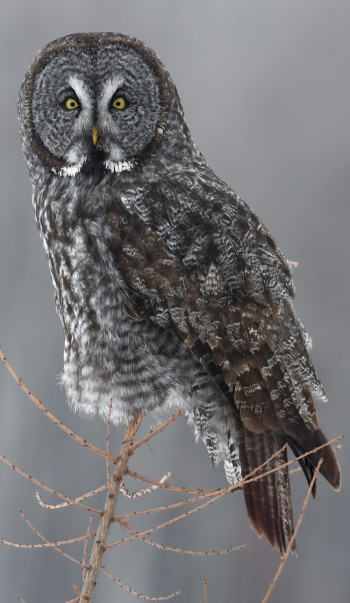
KEITH VALENTINE
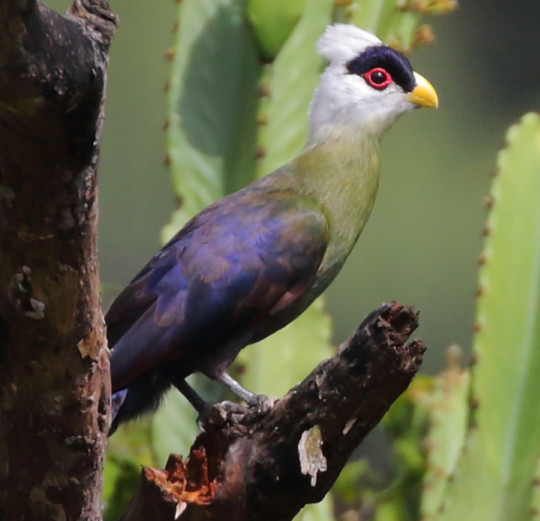
Turaco’s have always been one of my favourite families. Bright, colourful, bold, and unquestionably beautiful, some even look as though they have recently had their faces dolled up to perfection in the most outlandish way. An attractive family that is confined to the African continent, it is one of only a few groups of birds in the world where one can technically see every member. None are extinct, although a few are highly localised and threatened with habitat loss like the endangered Bannerman’s Turaco, which is endemic to remnant patches of mountain forests in western Cameroon and the vulnerable Ruspoli’s Turaco, which is only found in small patches of gallery forest in southern Ethiopia.
During my African travels I have been fortunate enough to have seen all 23 species within the Turaco family and all on numerous occasions. The image above is of the attractive and very distinctive, White-crested Turaco, a species that I first encountered in Cameroon but which I have subsequently seen many times in countries like Uganda and Kenya where it is a fairly common species of tall woodlands and gallery forest. This particular image was taken on my last and only tour during 2020 in Jan/Feb where I had the good fortune to explore Kenya during a 26-day tailor-made tour with the most fantastic group of people. Being based in Cape Town means a desert of Turaco’s in my backyard but I can’t wait to start travelling again and 2021 promises a lot in the way of Turaco’s considering my schedule includes a number of tailor-made trips to African countries like Namibia, Kenya, Tanzania & Malawi. Hope to see you in the field again soon. Happy Holidays everyone and all the very best for 2021!
GARETH ROBBINS
Once we had the opportunity to travel within South Africa, I made a visit to an area well known for its Wildflowers called Namaqualand. I had been here the previous year on a private Rockjumper Wildflowers, Mammals and Bird Tour but this year the flowers were meant to be extra beautiful. I visited the Skilpad section of the Namaqua National Park. Skilpad means Tortoise in Afrikaans. After a twenty kilometer drive on a semi-decent dirt road I suddenly came across these endless orange carpets of orange Daisies. I had never seen anything like this before and this is not only one of my best sightings of the year for me but one of the most memorable experiences in my lifetime so far!
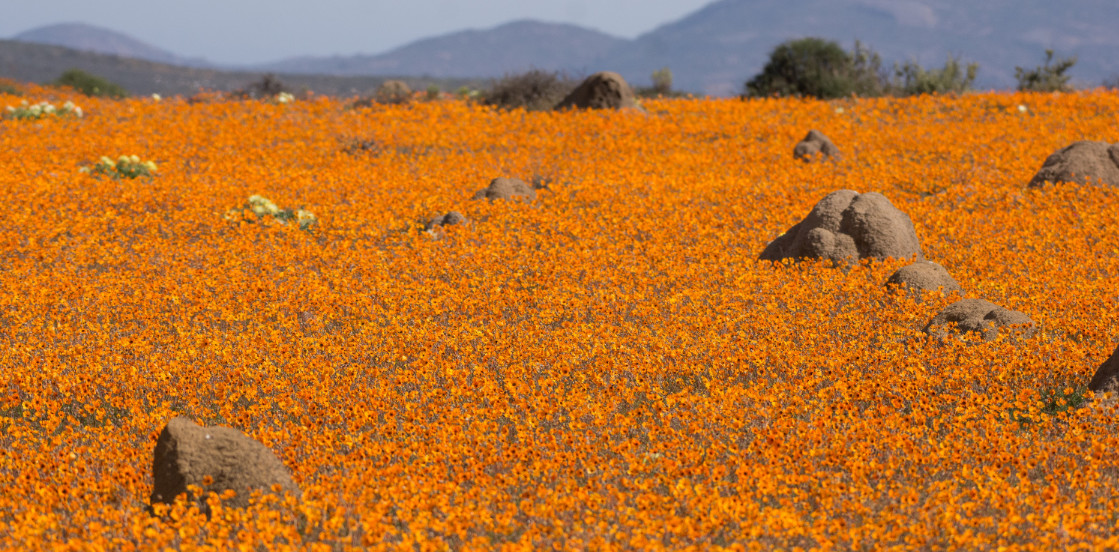
MEG TAYLOR
2020 began for our family in Ranthambore National Park, where Kai and I experienced our first Tiger sighting on 1 January. The first we read of COVID-19 was in a newspaper on a train in Hong Kong, during our quick stop for Black-faced Spoonbill on our way home to South Africa.
Throughout the year we have faced, overcome and enjoyed so many challenges together. We can almost share office space, we practically mastered the art of home-schooling, our garden has added bird feeders, a host of new trees and flowers, a rockery and a marsh! We’ve been fishing and frogging, snow chasing, birded local patches and squeezed in a few twitches.
Our team have connected incredibly well through weekly Zoom meetings, Tea(m)Time sessions, and bonded over our successful Global Bird Weekend. Looking back, it’s been a tough year for sure, and while there have been numerous setbacks in our industry, our Team have all grown individually, finding and developing new interests and skills after careful evaluation of what matters most to each of us. We still face many uncertainties, but we are confident that Rockjumper is Ready to Travel!
A personal highlight for me has been experimenting with videos and editing, a favourite moment was standing on the roof of the car to film these Grey Crowned Cranes at Thurlow in KZN.
BOBBY WILCOX
With movement restrictions being the norm since practically the beginning of a year we’d all like to quickly forget, I’m officially declaring 2020 the ‘Year of the Backyard Bird’. While I’ve been lucky enough to travel more than some with bird survey work and a recent tour to Costa Rica, some of my most memorable bird sightings of 2020 were actually a few epic feeder visitors.
The first turned up on the final day of February, in those halcyon pre-COVID days when we couldn’t possibly foresee the maelstrom that awaited us in a few weeks’ time. Similarly, my backyard birds could not have possibly foreseen the arrival of an immature Northern Goshawk, strafing the feeders in search of some migration fuel. Lucky enough to catch it out of the corner of my eye, it happened to land in a nearby tree where I was able to get a couple of frame-filling photos of this truly spectacular and rare visitor to southeast Iowa!
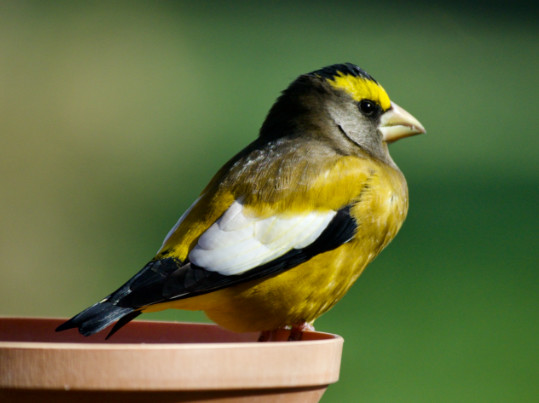
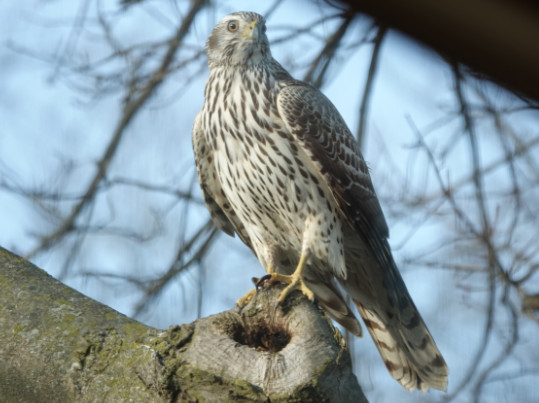
The second unexpected backyard visitor arrived as part of the vanguard of an historic winter finch invasion in the northern tier of the US. A fortuitous late fall glance at the water dish out on the deck revealed a shocking combination of yellow, black and white that I recognized immediately as an adult male Evening Grosbeak, a truly rare bird in Iowa!
So, while 2020 sucked in general, it wasn’t all bad, allowing many of us to reconnect with the common birds in our immediate vicinity. And as a newer member of the Rockjumper team, the pandemic was something of a blessing in disguise, allowing me to connect with fellow colleagues all over the world in weekly guide meetings and catch-up chats with our indispensable office team, and connect with our amazing guests with a webinar. Here’s to a fruitful and bird-filled 2021!
FORREST ROWLAND
This year was a very interesting year for me, as a gigantic departure from what any given year in the past 11 has looked like for me. Every year, we at Rockjumper do these wonderful ‘End of Year’ rundowns, including our favorite bird species. This year, I visited 1/5 of the countries I usually visit, travelled 1/9 of the days abroad that I usually do, and logged but 1/4 of the tally I usually end the year with. That being said, I was afforded a huge number of opportunities to revel in the beauty and wonder of the birds that are right in my home state of Montana. And I absolutely loved every chance I got!
So, this year’s bird of the year, for me, is none other than the demur American Pipit. As many of our readers, I have seen thousands of American Pipits of the years. Often in huge flocks, non-breeding, sometimes numbering in the hundreds in a single field, or shoreline. These are certainly spectacular scenes to enjoy, and impressive to catalog. But, before this very Summer, I had never spent time with displaying, singing, American Pipits, on breeding territory in the high alpine territories they hold in mid-Summer.
The experience I had atop the Beartooth Plateau, more than 10,000fasl (3300m), on the border of Montana and Wyoming just outside Yellowstone National Park this Summer, will be etched in my mind, and forever change how my appreciation for the species. Complete with neighboring Black Rosy Finches and grazing Mountain Goats, I spent over an hour watching two displaying American Pipits in an alpine field absolutely carpeted in more than a dozen species of flowers spanning every color of the rainbow. It was something I will never forget, and I hope the accompanying photo conveys some of the awe I felt in the moment.”
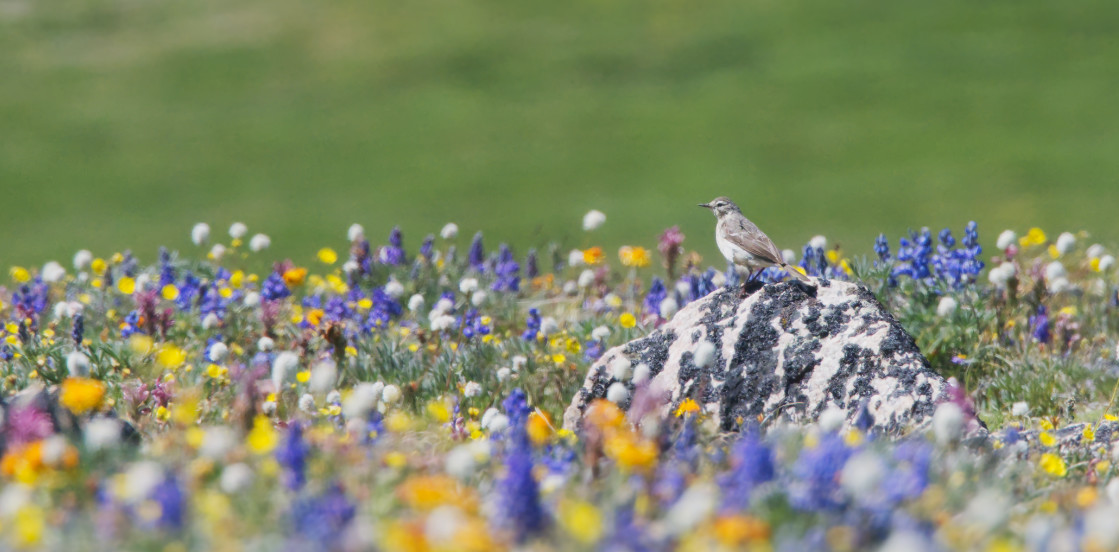
ADAM WALLEYN
In as challenging a year as 2020 there is much to look back on and be happy about. Easily the highlight of our year was welcoming our beautiful baby Isla Katherine Walleyn on October 20. She is a happy healthy baby and brings a new level of excitement and happiness into our lives.
I am particularly grateful for all the extra time at home this year which allowed me to spend so much time with my family. We got to spend lots of time in the spring and summer exploring some of the lesser-known nooks and crannies throughout southern California. Obviously, this gave me a chance to do a lot of local birding and I was very pleased to finally see a long overdue Flammulated Owl! I also got into a lot of herping and it was great fun tracking down almost all of southern California’s many herps – the single most memorable sighting was a gorgeous Rosy Boa that I found after a lot of long night drives! I also spent a great deal of time looking for mammals and learned a lot about the local ones this year, seeing almost all of southern California’s small mammals. I consider it a bit of an accomplishment (or maybe a sign of obsession) that I was able to get an excellent look at all 33 (!!) of San Diego County’s rodent species and saw 17 of its 19 bat species. The single most interesting mammal of the year found us though…when a Broad-footed Mole walked through our campsite in the Laguna Mountains in the middle of the day!
Guiding wise it was obviously very quiet – by far my slowest year in the past 20! However, I will look back very fondly on our Rockjumper Borneo tour in March that was exceptional not only for the super folks, all the amazing wildlife sightings we shared, but also the way the tour played out with the backdrop of COVID-19 starting up. We were fortunate to be able to operate the tour to its conclusion and everyone got home to a changed world. I will never forget that Bornean Ground Cuckoo that put on such a performance for us!
And finally, I do want to add that I have really been astounded at the kindness of our Rockjumper clientele – both the extraordinary generosity through the go fund me campaign, and also all of you who have reached out privately to me just to check in and see how I’m going. It makes me happy to work with and for people like that.

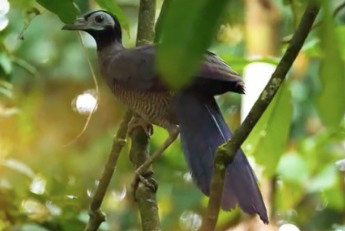
NIKI STUART
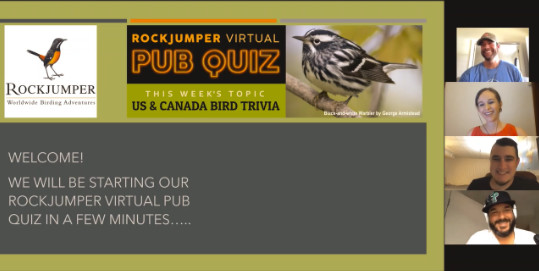
My favourite bird of 2020 was the black and white warbler by George Armistead from our first Rockjumper Virtual Pub Quiz.
As George described we had an hour of brainteasers that tickled our attendees’ brain for the darkest depths of bird nerd bits and facts.
Spending time with the Gritty City Guy, George Armistead; Montana Mountain Man, Forrest Rowland and Crazy Canadian, Lev Frid virtually online was a hoot and sums up 2020 where so much of our lives were now on zoom. Thank you, gents, for making it fun.
RIAAN BOTHA
This year, this unforgettable year, has taught me so many things. For one, tomorrow is not a guarantee. I had to remind myself of something my Grandmother loved saying, “life is something that happens, while you’re planning something else”. This could not have been truer for 2020.
Like most people I had a completely different plan for this year. Instead, I saw the migrating birds leave and I saw them return again, and that’s how you know you’re in lockdown for too long. Admittedly, when I first heard about coronavirus linked to someone eating a pangolin (or bat or some sort of animal) in Wuhan, China, I thought that this would surely save our pangolin population at least. That thought was soon forgotten when the first COVID-19 case hit us in South Africa, and I realised this thing is coming for us too. I still could not fathom how it would affect us in every way, as it was supposed to be just a quick three weeks of lockdown and then everything would be back to normal. OH, how wrong I was! The year 2020 was going to be ‘THE YEAR’ for many people. Instead, we were forced to explore our own backyard.
I was fortunate to be spending my time in the backyard as it is also known as Sabie Sand Game Reserve. Every day was fantastic, and I felt as free as a bird. We did daily walks in the bush at dawn. And with no tourism, we had the place to ourselves. I wonder if the animals noticed anything different? I’m sure they were out looking for tourists by day three of lockdown, feeling the need to show off their majestic ways.
Anyway, we all have interesting stories to tell about this crazy year. Some of us had so much time that we developed new skills. People became extra creative in their homes. Many families are now closer than ever before, while some are further apart. This virus has isolated us but by going through this hardship together, it has also linked us, globally, to one another.
The greatest thing that could have come of 2020, and something I am very grateful for, is that birds got some new love and appreciation. I hope people have realized that Birding is free, birds are omnipresent, they are wherever you are. My hope is that birding might now become bigger than ever. Covid-19 times have given birding the spotlight it deserves.
My favourite bird-photo-of-the-year was one that will remind me of the good times and the bad times. It is not my favourite bird family, but it is high on my list of favourites. It has some significance for me. It is called the ‘rain bird’ as it often calls just before the rain or even during the rain like the one in my photo was doing. It is the female that calls from an elevated perch and the male who comes along to bring her a gift, in the form of food to convince her that he is actually a nice guy.
The Burchell’s coucal (Centropus burchellii), like numerous other species of animals, was named after the famous explorer Mr William John Burchell, whom I wish I could have joined on his amazing South African travels in the days before Covid-19 restricted us. The call of the Burchell’s Coucal takes me back to many holidays and adventures. I grew up hearing this call. Probably one of the first calls I ever learnt. I used to watch them catching snails in our garden. Quite the hunter, a very smart bird. It smashes the snail against the pavement, crushing its shell, before gulping it down.
I am truly looking forward to what 2021 brings. Many tours and adventures laying ahead. I am going to stay positive, in a non-covid way, and keep faith that everything will work out the way we dreamed it would in 2020. See you in 2021!
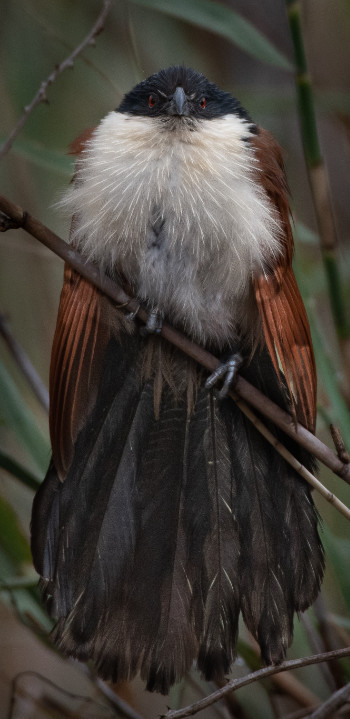
GEORGE ARMISTEAD
It’s good to have a dragon to slay once in a while. My biggest one lay up in the North Woods. But I had the drop on him.
If you’re heading into new terrain it sure helps to have some local know-how and while my co-guide for our March Manitoba tour wasn’t from that province, Lev Frid sure does know the ground and the birds as well as anyone around. I had been to Manitoba and the Winnipeg area three times in the past, but all were over 15 years ago and in summer. Winter here, it becomes almost a different planet. The vast plains and spruce and birch woodlands, so full of songbirds and sound in June, become a place where birds are few and far between. One must cover a lot of ground to see the special birds, but the ones that are here are special indeed. This is not a trip about quantity, but one of quality.
The birds that persist here in winter are utterly captivating and much sought-after. There are some awesome mammals, fancy finches, and of course owls are a major emphasis. I wanted a Great Gray Owl in the worst way. This was my most overdue lifer for North America and the ABA Area. And we had great luck with these birds, with a couple of nice close encounters the first couple of days of the trip. I thought for sure this would be the highlight, but there were many, and two moments in particular that really stuck out.
The fist occurred just outside our hotel in Hecla Provincial Park, when after lunch a couple in our group took a stroll and discovered a gorgeous Northern Hawk-Owl. As we took it in and listened to it giving some husky, coughing calls, all of a sudden, a Pileated Woodpecker flew in and landed in the same tree below the owl. The Pileated was not happy with the owl, and the interaction between the two was spellbinding.
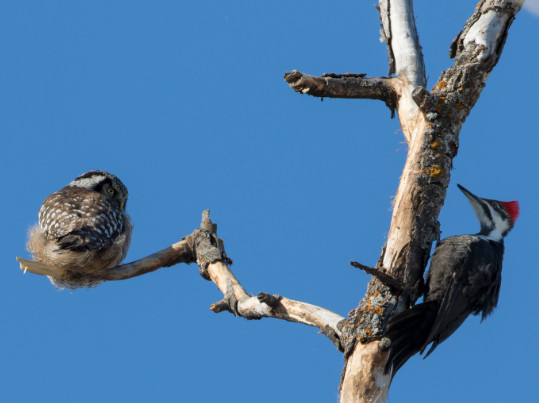
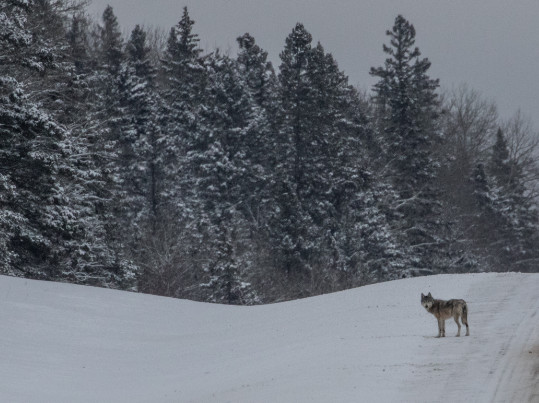
The second moment came as we drove the road hoping for a bird or mammal to appear. These can involve long waits, but if you’re lucky they’re punctuated by a stunning encounter. Such was the case when suddenly upon rounding a curve I saw Lev’s lead vehicle had stopped and everyone was out and looking ahead. Just as we rolled to a stop and I raised my binocs, I heard someone in my car say, “it looks like a coyote”. To which I replied wide-eyed with palpable excitement, “that is a wolf.” We watched it lope along the road ahead of us for a while until it ducked off into the spruces. We lingered and then heard a long loud howl. It was chilling and it was thrilling.
I can’t wait to get back. We squeezed this tour in just before COVID hit. Someday I want to return to this area to see the Narcisse snake dens!
CLAYTON BURNE
At the beginning of 2020, I could only think of 2 genuine ‘bogey birds’ – species that I have actively looked for on a number of occasions but failed to find. More than a year in the Andes, but no White-capped Tanager. I’ve not even heard them call! The other was Burchell’s Courser, a nomadic wader found in the deserts and semi-deserts of south west Africa. I’ve driven thousands of kilometres over the course of 6 years in three countries to no avail.
Needless to say, with COVID showing its teeth during a cold South African winter – twitching a bogey bird wasn’t at the forefront of my mind. When Meg sent me a photo of Burchell’s Courser one afternoon – I replied flippantly at what was patently an ill advised joke. It wasn’t though – Meg was just paying more attention to the rare bird group… We were packed and on the road within the hour, driving for nearly 4 hours to reach the site on the KwaZulu-Natal border. It took only 20mins of searching the next morning to put my most irritating bogey to bed.
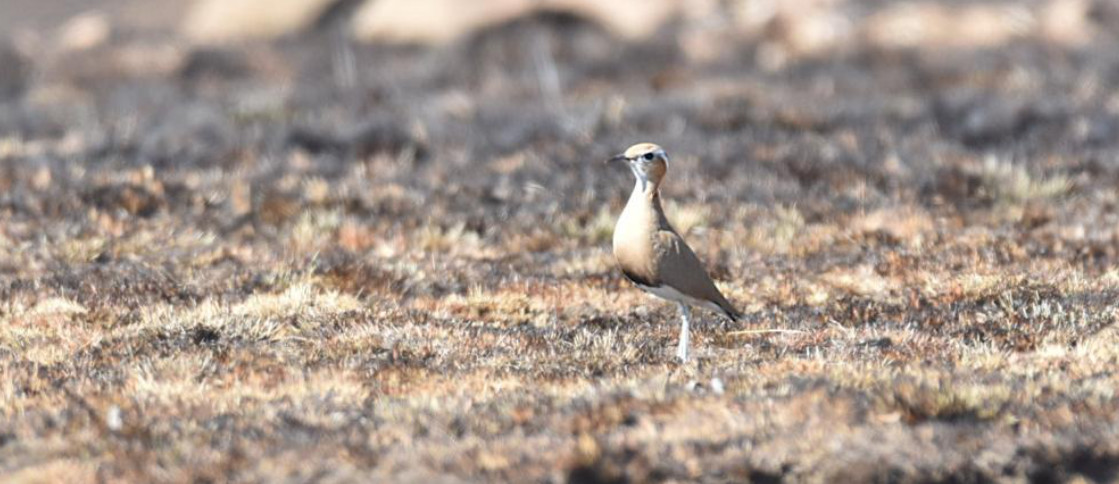
We’ve twitched a lot of birds, and they’re all a mix of excitement, fear of dipping, adrenalin and high fives when we find a rarity. And yet this was emotionally flat – I wasn’t so much excited or happy as relieved, perhaps tempered by the quarry itself. After all – it was Clayton 1 – Courser >100…
NIGEL REDMAN
2020 did not turn out as planned. It started well, with the promise of a busy year, but no one could have predicted what happened. Instead of globetrotting to exotic places in search of fabulous birds, most of us were confined to our homes and gardens, and, if we were lucky, short forays for daily exercise. The Covid-19 pandemic has had a devastating impact on all of us, but we will continue to fill our lives with birds and birding, in some form or other.
I returned from a successful tour to Ghana in February, expecting to have a month’s recuperation before my next adventure, but it is now December, and I’m still at home. For much of our summer, I managed to fill my time with a couple of big editing jobs. I was working on a brand-new field guide to the birds of Argentina, and a major new edition of Birds of East Africa. Both are now published, and it’s great to be able to see them in print. I look forward to using both at some point in the future.
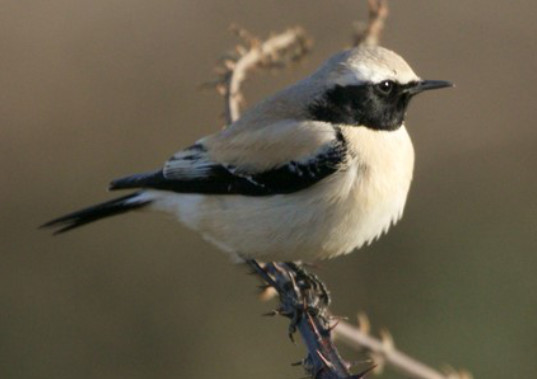
Since February, I have not strayed out of my home county of Norfolk, rarely travelling further than a 10-mile radius of my house. Fortunately, in terms of British birding, Norfolk is a great place to be and, much to everyone’s surprise, 2020 turned out to be a good year for birds. Scarce species such as Little Terns had their best breeding success for a generation, largely due to lack of disturbance as most people were confined. But rarities and scarce migrants are what turns on most birders up here, and 2020 did not disappoint. Nationally, it was a sensational year for rare birds, and Norfolk had its fair share. One of my highlights was a Bearded Vulture which visited Norfolk for just a few hours during its three-month stay. Fortunately, it was close to where I live. Another highlight was a Rufous Bush Chat, the first in Britain for 40 years, which showed up on Global Bird Weekend. The very last rarity of the autumn was an immaculate male Desert Wheatear which stayed a whole week.
Having finally got used to being at home all the time, I am now looking forward to 2021, and I’m rather hoping that I will be able to travel again with some of my wonderful Rockjumper friends. So far, things are looking promising.
PETER KAESTNER
2020 has been in many ways a lost year, as we have all spent interminable days isolating ourselves in order to decrease the spread of COVID.
As one of very few professional guides who is also a Rockjumper client, my fortunes this year have been mixed. I was very fortunate to have led three successful Rockjumper tours in January and February (South India, Sri Lanka, and North India/Tigers), so I was able to get my work in before the lockdown. On the other hand, several trips that I was planning to do as a client have been cancelled. 2021 is looking uncertain with some of my leading assignments and tours that I am participating in, already cancelled.
As a way to support Rockjumper (wearing my client hat) I signed up for a short notice abbreviated trip to Kenya (December 2020) that was ultimately abandoned for lack of sign-ups. I figured that could serve the same purpose by doing the trip as a custom, private tour. As I write this, I’m flying home to the USA after three great weeks in one of bird and wildlife paradises of the world with my wife Kimberly.
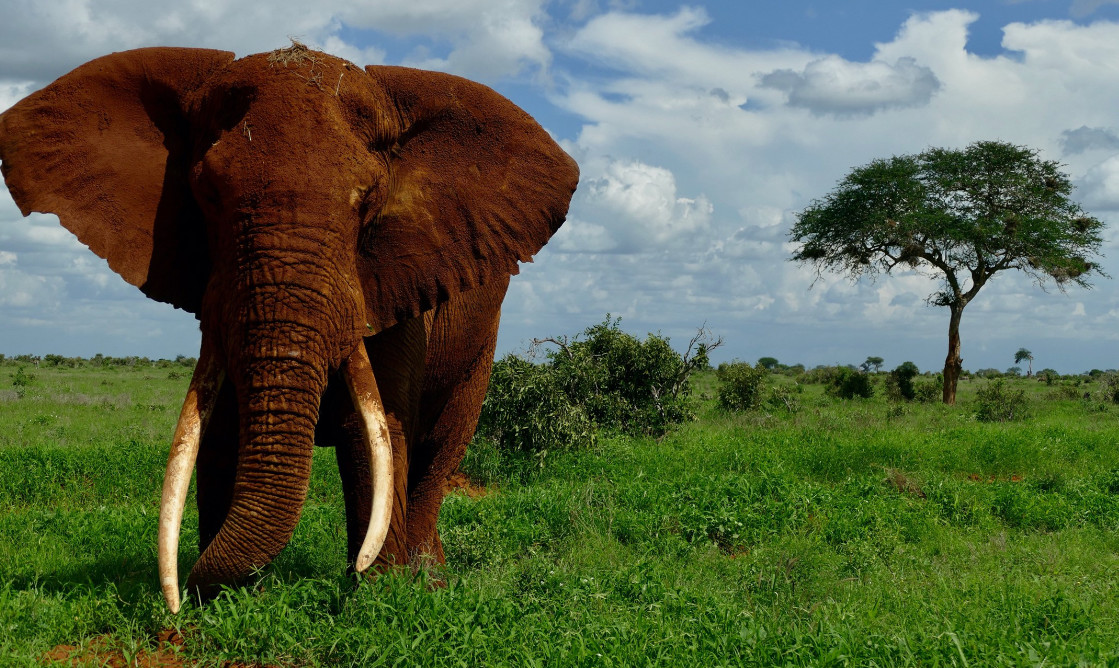
While we had a fabulous time enjoying Kenya, the trip was bittersweet. The parks and lodges (the very few lodges that were still open) were almost completely empty. While having the animals to ourselves was fabulous, the knowledge of terrible toll that COVID-19 was taking on the tourism industry in Kenya was very sad. On the other hand, everywhere we went we were welcomed like heroes and thanked profusely for having come.
From a COVID perspective, we felt safe. Certainly, much safer than in the USA! Almost all lodges are designed with open spaces from the front reception to the restaurants. We wore medical-grade face masks constantly, except while eating, relaxing in our room, or posing for a photo.
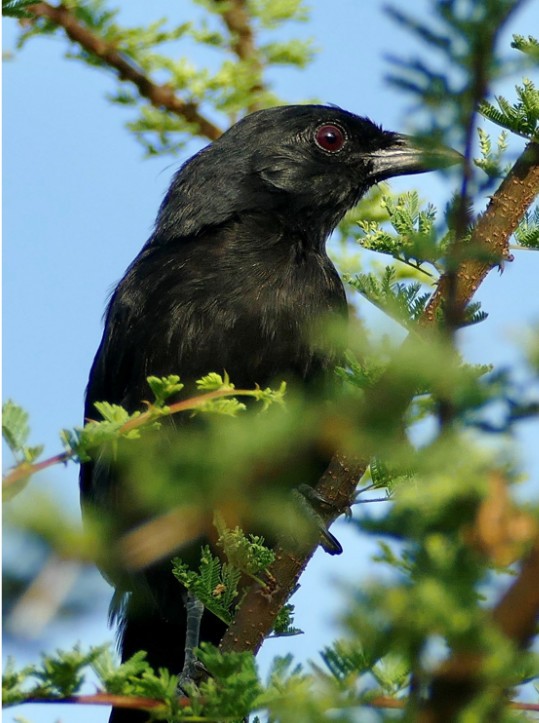
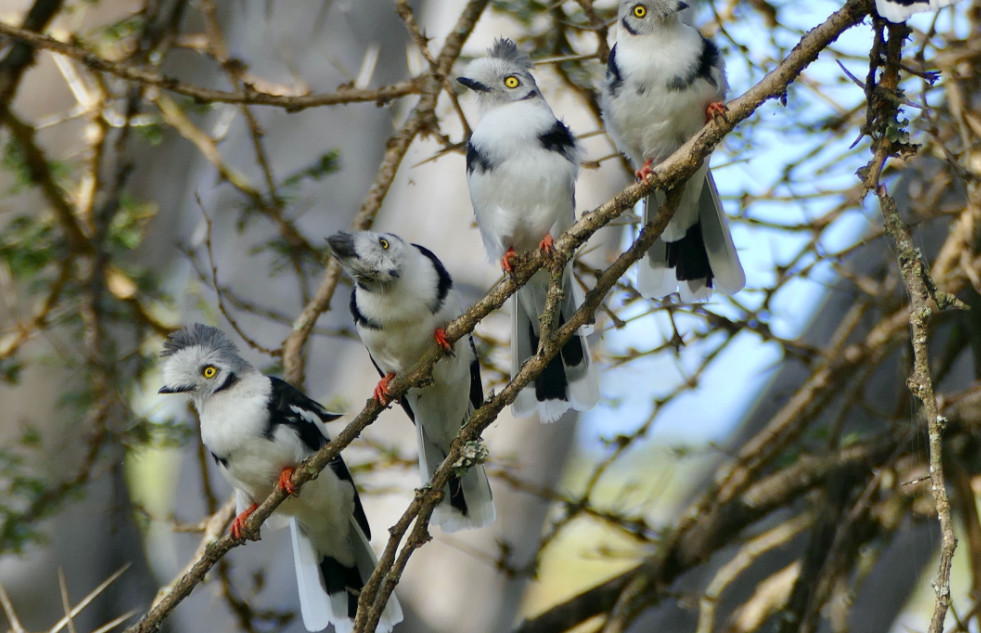
All in all, the trip was a huge success, as we saw over 500 species of birds (including eight lifers for me) and scores of mammals (including a lifer Striped Hyena!). In addition to the wonderful experiences, we had the satisfaction of helping in a small way to support Rockjumper, our regional agents, our guide and driver, the local lodges, and their employees.
We are looking forward to the day when vaccines make the present precautions moot, and our birding travels will be more reliable.
CARLOS SANCHEZ
Reflecting on the year 2020, it has been a rough and tumultuous year both globally and personally. However, even in such a year, there are days that went ‘just right.’ In the middle of June in South Florida, an American Flamingo showed up close to a quiet road in the Florida Keys. I headed down there with a friend in the early morning, and this brilliant bird was feeding right by the road as advertised. There was also a top-notch supporting cast with a Black-whiskered Vireo calling incessantly from the nearby mangroves, flocks of White-crowned Pigeon zipping overhead, even a Mangrove Cuckoo and a Florida Keys Clapper Rail made an appearance. The day was seamless and beautiful. May 2021 bring many such birding days to all of you!
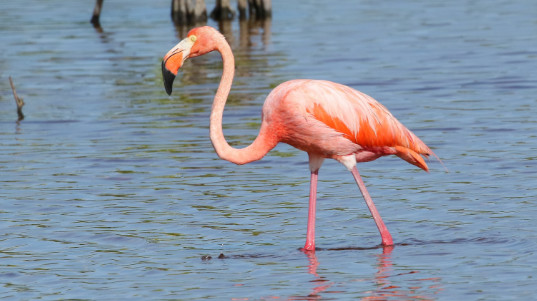
DAVID HODDINOTT
On the 13th of December a friend and I were driving up to Zululand in search of Great Snipe (found by Adam Riley) which is a rare bird in South Africa. En route we received a message that a Madagascan Cuckoo had been found in Hluhluwe Game Reserve, not far from where the snipe was seen. What a bit of luck!
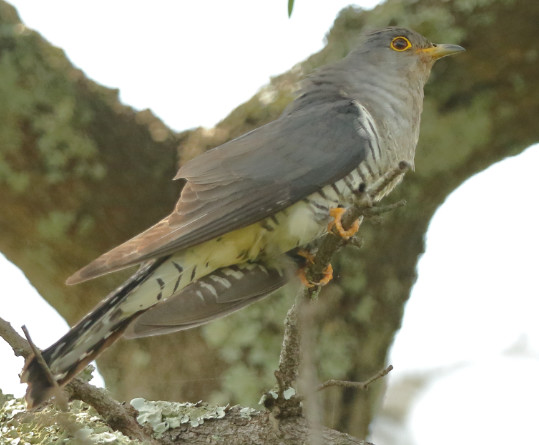
This is only the 3rd confirmed record of the Cuckoo for the province of KwaZulu-Natal and is a very rare bird in Southern Africa, normally only wintering in East Africa. There was not enough time to get to the site during the day, so we overnighted in the St Lucia area. The following morning, we went in search of the snipe, sadly to no avail. However, the cuckoo was still in the back of our minds, so we dashed over to Hluhluwe Game Reserve and arrived in good time. Upon our arrival the cuckoo was heard calling in a valley some 600m away. Being a Big 5 reserve with Elephant, Buffalo, Rhino, Lion & Leopard, one is not allowed to walk without an armed ranger. We waited at least an hour to see if the bird would come closer, it called intermittently and did not appear to move closer to the road, so we drove to the main camp and arranged a ranger to accompany us. It was a very tense 20-minute drive back to the site as we were concerned that if it got too hot the bird would stop calling and then be impossible to track down. To our delight we heard it on our return and then walked with the ranger into the bushveld where eventually we tracked down this fabulous bird, and I am able to share a photo of the bird here.
This was number 2162 species for me for Africa and with less than 150 resident birds on the continent to see, it was an enormous find!!! As I write this, I am still beaming from ear to ear.
ROB WILLIAMS
2020 was an unprecedented year of cancellations, uncertainty, hardship and loss for many. In March, I was fortunate to be one of the last leaders still in the field in Panama, and in November, I was fortunate to be one of the first back into the field, in Kenya and Tanzania. Although most of my tours were cancelled, I was lucky to spend lockdown in rural Somerset (in the south-west of England) with my family, to have remained healthy, and to have had a few projects to keep me busy; many faced much more challenging times.
Having only guided the two tours and been mainly confined to my local patch in Somerset for the rest of the year, my year list is far smaller than usual and there are fewer experiences to choose from as highlights. I enjoyed getting into NocMig recording over my garden and added a few new birds such as Eurasian Coot and Little Grebe to the garden list; I have yet to detect a true rarity but will be doing it regularly from now on.
In Panama, I hiked up Cerro Pirre in the Darien. This isolated massif has a series of endemics and I was fortunate to locate them all in my 5 days camping and hiking. The highlight for me was getting to see Pirre Hummingbird, although it is not one of the more spectacular hummingbirds, it is a bird I have long wished to see.
In Kenya and Tanzania, I reacquainted myself with many species I had not seen since I have been eBirding and “eBird lifers” are always welcome, and ease the guilt of not having put all my historical records into eBird yet. We saw a lot of great birds on the trip but a Martial Eagle facing off the a female Thompson’s Gazelle was my highlight. I have a weakness for raptors and looking over the back of the gazelle into the fiery yellow eyes of one of Africa’s largest eagles gave an image I will long remember.
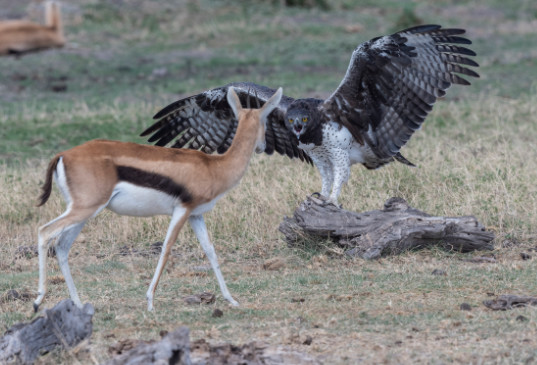
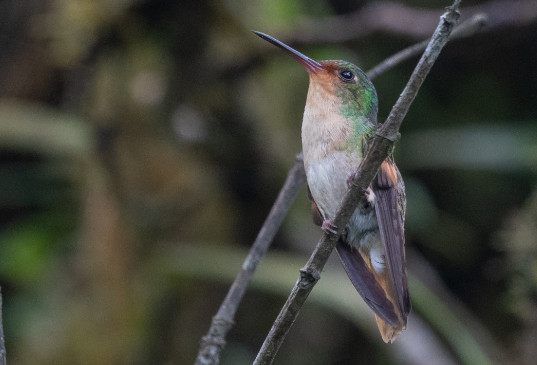
TUOMAS SEIMOLA
On several occasions during the last 10 months, I have found myself exploring hard drive folders and going through pictures from past tours and travels. Remembering all those encounters with amazing birds, mammals with unforgettable scenery has given some colour to occasionally rising melancholy – not uncommon among us Finns here in the dark North.
Covid-19 has turned the daily life of millions of persons upside down and forced us to pay attention to everything that we have taken for granted earlier. In these troubled times many of us have had the opportunity to spend more time with family and that is time extremely well spent. When the world is at standstill, you realise how being able to travel is a real privilege. I haven’t spent this long a period in Finland for nearly twenty years. It is funny and at the same time controversial, that a bird guide doesn’t find himself missing most vibrant Tanagers of cloud forests, duetting Antbirds or “neon sign like” Hummingbirds nearly as much as the astonishing personalities that I have been able to meet, bird with or guide during the past adventures and Rockjumper Tours!
Keep safe everyone! I wish you Merry Christmas and, from the bottom of my heart, Happy New Year. I’m privileged to have met you and waiting to meet you again in the field. I will trust the world’s tiniest hummingbird from Cuba (February 2020) to bring my greetings to you!
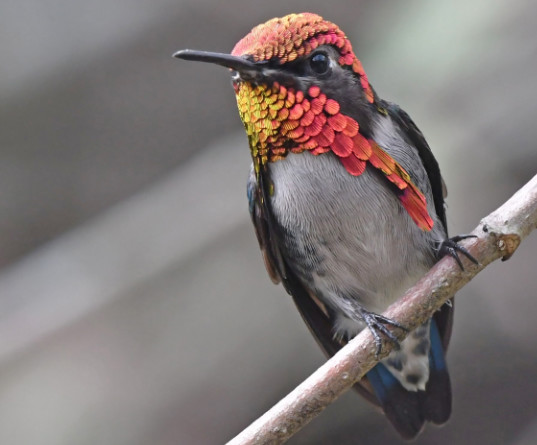
YOAV PERLMAN
In most years, a significant part of my time is spent birding and travelling overseas. This year, obviously, has been very different. I did manage to squeeze in one single quick trip to look out for Iberian Lynx in Sierra del Andujar in Spain, last minute before international travel in and out of Israel halted.
So instead, this year I dedicated my birding to Israel. While Israel went into a few lockdowns, luckily my job is defined as ‘essential’, which allowed me to do ‘essential birding’ almost non-stop. In fact, it was a perfect year for me to try a Big Year here. It was a wonderful year to bird in Israel, which I am thankful for. With a fantastic breeding season, wonderful migration and lots of quality birds, action never ended. I spent much time doing fieldwork, focusing on our national breeding bird atlas I am coordinating. This took me to some wonderful spots, including unforgettable desert mornings watching displaying Greater Hoopoe-larks and Arabian Dunn’s Larks. I had enough time for ‘recreational birding’ too. I participated in both of eBird’s Global Big Days, including October’s Global Birding Weekend, in which I contributed my sightings to Team Rockjumper’s record-breaking achievement. Three new species were added to the Israel bird list this year, and I saw two of them – Three-banded Plover and Wilson’s Phalarope.
What will 2021 bring? I hope international travel will resume. I miss visiting new and familiar places, and meeting new people. I will continue birding in Israel, which I appreciate and love, but I hope to balance that with a good amount of global birding…
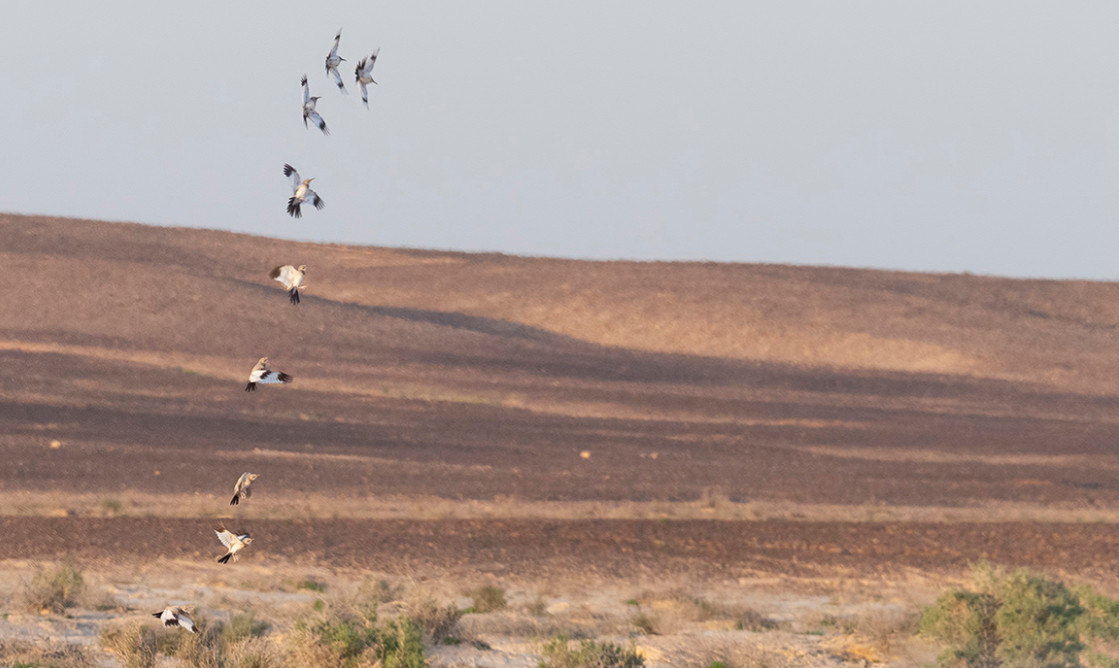
ERIK FORSYTH
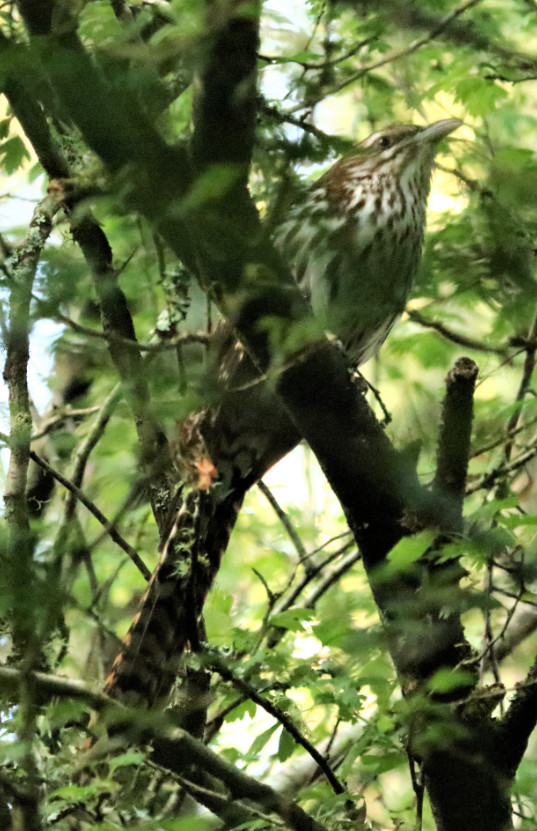
2020…. so many things to talk about and so much soul searching, and depression was had and then excitement for the upcoming 2021. Watching the webinars (Unfortunately due to work I have not been able to present as yet) have been a huge relief and the generous funding by our supporters has been a saviour in so many ways. Thank you for helping us through these difficult times.
So getting back to bird of the year for me has to be an expedition I put together to try and photograph the elusive Long-tailed Cuckoo, a summer breeding migrant (Nov-Feb) that is more often heard than seen. It winters in the Northern Pacific Islands and the travels down to NZ where it parasitizes, robins, tomtits and Whiteheads.
With the school holidays underway and a weekend off from work I knew this would be the only chance as the cuckoos go quiet by January. I packed the teenagers, tents, sleeping bags, rubber dingy and cooler box with food and headed off on the Saturday afternoon. We arrived at 4pm and on entering the campsite heard a cuckoo calling. A relief!
I sent the kids down the river to the waterfall in the dingy while I stomped around the campsite looking for the calling bird. There were 2 birds around the campsite and being low down in the trees (although very difficult to observe) I knew they were looking to parasitise a nest. Every so often the cuckoo would get chased around the camp by aggressive Tui’s, a large NZ Honeyeater. Trying to get a pic was very difficult as they flew too fast avoiding theTui’s grasp. The next morning I chanced into a calling bird at 06:30am and fired off a few pics before my first cup of tea!. I tried for further pics during the morning which proved too difficult as the bird was often out of sight or fleeing a Tui at high speed. When we returned home that evening I was pleased with the earlier results and so obtaining a record shot/pic of my ” Bird of the year” was successful!
Enjoy the pics, Here is looking forward to a successful 2021 now that the vaccine has been rolled out.
